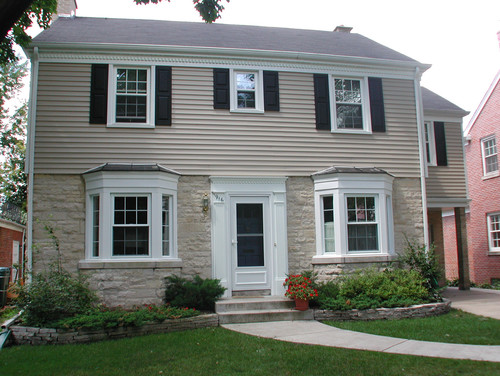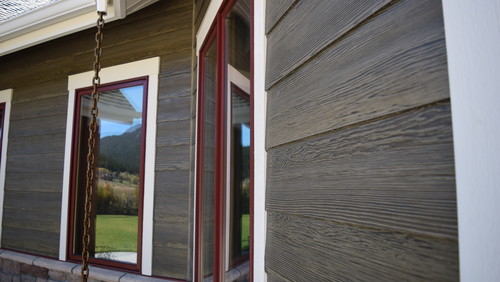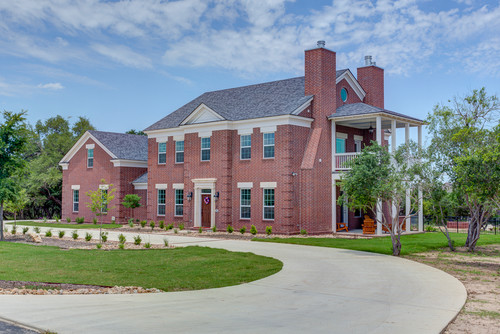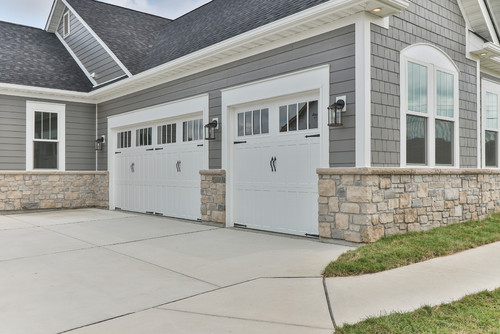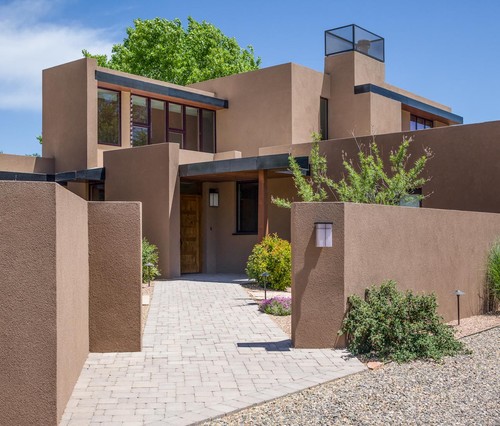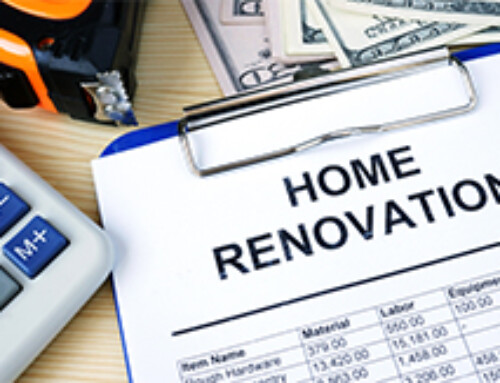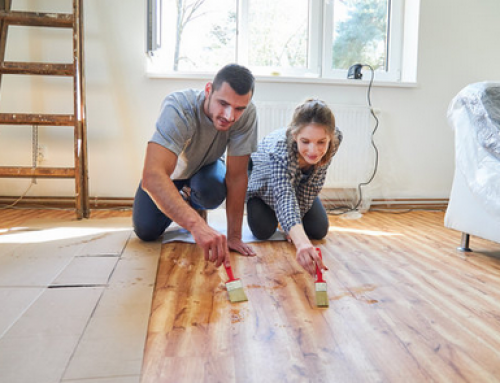If you know the story of the three little pigs who built their homes out of straw, sticks, and brick, then you know how crucial it is to pick material that will protect the exterior of your home. (Spoiler: Straw is not a good choice!) And while brick will protect you from the elements—and certain bad wolves—there are all sorts of products you can use to build, or reside, your home.
But you’ll want to choose the right type of exterior siding to not just protect, but also beautify your home’s facade. Good exterior siding can add definition and color, and boost your home’s overall curb appeal.
“Understanding and choosing the best exterior siding option for your home, and budget, is important because your exterior materials provide the first defense for the interior of your home,” says Carrie Barker, who runs the blog Caroline on Design.
Barker, who designed her own custom home from the ground up, adds that exterior siding improves your home’s ability to maintain a comfortable temperature without raising your cooling and heating costs.
Homeowners should consider not only how durable the material is but also how easy it is to install, along with the material’s water resistance and versatility. So here’s what you need to know about all the siding options out there.
Vinyl
This siding is a type of plastic made from polyvinyl chloride, or PVC, often used on smaller homes or apartment buildings requiring weatherproof protection.
“Vinyl siding is one of the most affordable options,” says Chad Sanders, merchandise vice president at Lowe’s. “Durable and low-maintenance, this siding can be applied over existing masonry or wood siding to transform the look of your home.”
Vinyl siding doesn’t require painting or caulking. And manufacturers carry vinyl siding and accessories that mimic the look of wood, stone, and other natural siding materials.
Cost: Expect to pay $3 to $12 per square foot.
Pros: Vinyl siding is not only a budget-friendly choice, it’s also fire-resistant up to 750 degrees Fahrenheit.
Cons: There’s no hiding that vinyl siding looks like what it’s made out of: plastic. The material also fades quickly, and you might see mold without a waterproof seal. Another downside? Vinyl is not eco-friendly, and it’s prone to cracks over time.
Fiber cement
Fiber-cement siding is a manufactured product made from a mixture of sand, cement, clay, and wood pulp.
“Many people choose fiber cement because it can be molded to look like different materials,” says Bailey Carson, home care expert at Angi. Indeed you can choose from a variety of styles, textures, and a rainbow of factory paint colors and finishes.
Cost: You’ll pay $5 to $13.50 per square foot.
Pros: Fiber-cement siding is low-maintenance, nonflammable, termite-resistant, durable, and eco-friendly.
Cons: This type of siding can be expensive and difficult to install. The material is also not energy-efficient and needs repainting every 15 years.
Natural wood
Wood is a versatile, naturally beautiful option when it comes to siding. It’s available in different species and styles, such as board and batten, shingles, shiplap, and clapboard. You can also paint or stain wood for even more variety.
“Compared to vinyl siding, wood siding can also improve your resale value,” says Carson.
Cost: Expect to pay $2 to $5 per square foot.
Pros: Wood siding is easy to install, and you’ll be rewarded with a rich look that’s storm-resistant and green.
Cons: Wood is a relatively high-maintenance option that requires regular staining or painting to prevent damage. Worse, wood’s susceptible to insect infestations and prone to rotting if not cared for correctly.
Solid brick
Made from clay and shale, brick is a sturdy construction material with a long history in construction.
“Brick is stunning, whether in its natural state or painted,” says Barker. “And it’s a great option if you have the budget to support this material and don’t live in a really cold climate.”
Cost: Homeowners will shell out an average of $15 per square foot.
Pros: Bricks come in different sizes and textures. And as it has been in use since the 11th century, brick is long-lasting and will make your home look timeless. Another bonus: Brick is weather- and fire-resistant.
Cons: Building with small rectangular bricks is a labor-intensive endeavor, meaning you’ll pay extra. Another downside? Bricks don’t provide the best insulation.
Brick and stone veneer
“If you want a beautifully classic look, stone veneer siding is a great choice,” says Sanders. “Brick veneer can be used on its own, or you can pair it with wood, stucco, or vinyl siding to create a unique look.”
Both veneers are made from concrete to look like natural stone and installed with adhesive, mortar, or screws.
Cost: Brick veneer typically costs $10 to $20 a square foot, and stone veneer comes in closer to $50 per square foot.
Pros: Stone veneer siding sports a variety of natural and synthetic materials, giving homeowners a choice of colors and textures. Adding to stone’s pluses? It’s long-lasting, lightweight, and a less expensive alternative to natural stone. Brick veneer is highly durable and resistant to weather, pests, and fire.
Cons: Aside from the expense, stone veneer requires annual cleaning with a hose and isn’t environmentally friendly as it won’t last as long as natural stone. Brick veneer is vulnerable to moisture and can crack or warp over time.
Natural stone
Natural stone can add unparalleled beauty and texture to your home’s exterior.
“It’s basically the GOAT [greatest of all time] when it comes to siding materials,” says Barker. “It’s gorgeous and extremely durable.”
Cost: While stone is pleasing to the eye, it’s not so great for your bottom line as it costs $35 to $50 per square foot.
Pros: Natural stone is fire- and insect-resistant. And as it’s quarried from the earth, the material handles all kinds of weather, lasts a lifetime, and is resistant to moisture and pests.
Cons: It is pricey, and the nature of the material makes installation a lengthy process.
Stucco
Stucco consists of Portland cement, sand, lime, and water. When combined and dried, these ingredients make a durable substance that becomes a building material. Stucco’s texture can be smooth or rough, depending on how it is finished.
“It’s similar to fiber cement in composition and price,” says Carson. “Stucco is also a great choice for curb appeal because it can be painted and molded to match your home’s style.”
Cost: Stucco will set you back between $5 and $9.58 per square foot.
Pros: Stucco’s durable, low-maintenance, and fire-resistant. The material is also energy-efficient, which helps cut your utility bills.
Cons: Stucco cracks when exposed to significant temperature and humidity shifts, making it best suited for areas with milder seasons.

We are ready to help you find the best possible mortgage solution for your situation. Contact Sheila Siegel at Synergy Financial Group today.



